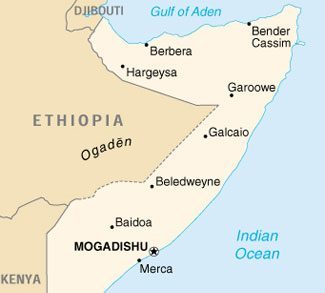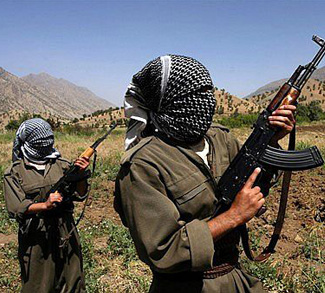On 22 July, an armed clash erupted between Somali government forces and Al-Shabaab militants in southern Somalia. The confrontation occurred when Al-Shabaab attempted to overrun three military bases in Jubaland state, approximately 80 kilometers southwest of the strategic port city of Kismayo.
According to local security officials, Somali government forces successfully repelled the attacks by leveraging prior intelligence about the militants’ movements. This allowed the Somali forces to vacate the bases before the militants’ arrival and then encircle them, preventing significant losses.
The jihadist group launched the assault using four car bombs, which were safely detonated by government forces. However, Farah Hussein, a military official, reported that five Somali soldiers were killed.
The Ministry of Defense for the Federal Republic of Somalia released a statement recognizing Jubaland and government forces for their efforts, claiming they had killed over 80 Al-Shabaab fighters and seized their weapons. The Somali National News Agency (SONNA) reported that nearly 100 terrorists were killed. However, the exact number of casualties remains uncertain, as the government, Al-Shabaab, news agencies, and eyewitnesses provided conflicting accounts.
Al-Shabaab, an Islamist militant group linked to Al-Qaeda, has been waging an insurgency against the Somali government for over a decade. The group aims to establish a strict Islamic state and frequently targets military personnel and civilians in Somalia. Despite numerous offensives by Somali forces, Al-Shabaab remains a powerful threat capable of large-scale attacks.
Jubaland, where the recent clashes occurred, has long been a hotspot for Al-Shabaab activity. Its proximity to Kismayo, a major port city, makes it strategically significant for both the militants and government forces. Control over this area allows Al-Shabaab to facilitate smuggling operations and influence local communities.
The recent clash emphasizes several aspects of the ongoing conflict in Somalia:
The successful repulsion of the Al-Shabaab attack demonstrates the increasing tactical proficiency of Somali government forces. By proactively abandoning the bases and encircling the militants, the Somali forces minimized their casualties while inflicting significant losses on the enemy. This strategy indicates improved intelligence capabilities and coordination among Somali military units.
Despite heavy casualties, Al-Shabaab’s ability to mount such a coordinated attack highlights its continued resilience and operational capacity. The use of car bombs suggests that the group retains the resources necessary to execute complex assaults.
The inconsistency in casualty figures reported by the Somali government and Al-Shabaab reflects the broader struggle for narrative control in the conflict. Both sides use propaganda to bolster morale and control public opinion. Accurate information is often hard to come by, complicating efforts to understand the true impact of these clashes.
The Somali government is taking proactive steps to eliminate extremist content online. Collaborating with tech companies, they target websites and social media accounts linked to Al-Shabaab, with the National Intelligence and Security Agency (NISA) leading these efforts. The government has the legal authority to shut down and seize domains associated with Al-Shabaab, which it employs. However, extremist groups adapt quickly, creating new domains and accounts. Yet these measures have also led to criticism, as the government is sometimes accused of suppressing Islamic media under the guise of combating extremism.
The clash in Jubaland indicates that while Somali forces are making strides in their fight against Al-Shabaab, the path to lasting peace and stability remains a challenge. The government’s ability to sustain and build on these military successes will be crucial in weakening Al-Shabaab’s grip on the region. Continued support from international partners, particularly in training, intelligence sharing, and logistical assistance, is needed.
For long-term peace, it is essential to address the underlying socioeconomic issues that fuel the insurgency, such as poverty, unemployment, and lack of education. Strengthening governance and promoting development in these regions can undermine Al-Shabaab’s influence and prevent the recruitment of youths into militant ranks.
By improving access to education, creating job opportunities, and enhancing public services, the Somali government can reduce the appeal of extremist groups and build a more stable and prosperous society.




